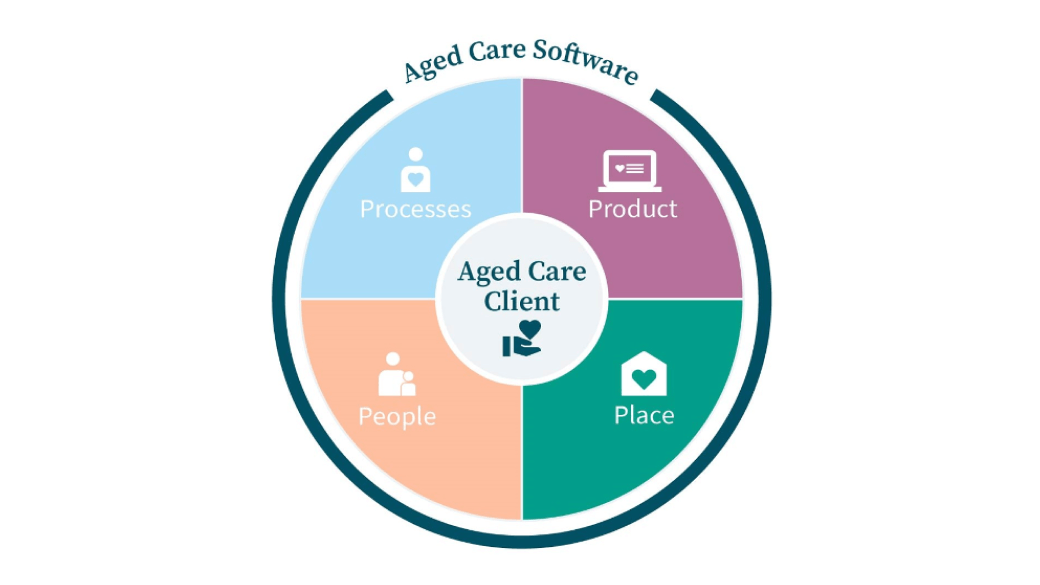The last three years have been nothing short of transformational for the Australian aged care industry.
The simultaneous impacts felt by The Royal Commission into Aged Care Quality and Safety and COVID-19, coupled with already-evolving legislative and funding structures and a new profile of aged care clients, have presented dynamically. In isolation, any of these variables is significant, but as their collective forces collide, the cumulative impact has delivered a genuinely defining point in Australian aged care.
As a result, it is time to reimagine what aged care means; for providers, recipients, and all stakeholders involved in the market.
In particular, the growth and demand for home care will be front and centre in considering what aged care will mean in the years ahead. That is not to suggest that it is imperative that an aged care organisation provides home care, but instead that they must deeply consider what the broader sector will look like and what place they occupy in the market.
The number of home care recipients has tripled in the last ten years1, and home care will become increasingly important in the future for various economic and social reasons. In fact, the lack of funding for home care packages has arguably diminished demand and uptake for home care. However, one can reasonably expect this demand to rise as funding and packages increase. Furthermore, as the industry grows and more for-profit companies enter the market, aged care recipients are increasingly afforded choice in every sense of the word.
The baby boomer generation will dominate the aged care client cohort in the next two decades and is wealthier than the generations that preceded them. Baby boomers have experienced significant growth in equity in their homes and were the first generation to receive compulsory superannuation. As such, they can generally afford better standards of care and are willing to actively seek them out. Therefore, it is reasonable to expect that the modern aged care recipient will take an increasingly astute approach to provider selection. They will make considered and informed buying decisions based on selection criteria that are important to them.
The Final Report of the Royal Commission into Aged Care Quality and Safety has outlined how the industry must place aged care recipients at the centre of a reimagined system. Therefore, beyond the fact that client-centricity is a good business practice, an industry-wide focus on providing better services for aged care recipients is now upon us.
As this continues to play out, there is a growing importance in defining who an organisation serves. This may seem a redundant concept; aged care organisations serve aged care recipients. But the need for specificity cannot be overstated. For clarity’s sake, this proposition does not imply that a provider should deny care to anyone, but rather that each organisation should design services specifically for a nominated segment of the broader aged care market.
For example, perhaps your organisation is uniquely capable of caring for people with diverse cultural and linguistic needs? Or people with dementia? Or people with the financial capability and desire to receive a unique set of additional services? Becoming clear on your core competencies and how they align to an addressable market segment is now of the utmost importance.
To help aged care organisations navigate the transformation that is ahead and develop strategies that allow providers to best serve their community, Epicor has created a framework called the Epicor Care Quadrant, as illustrated below. Over the coming weeks, we will be providing articles that unpack the model and provide insights that will assist you in best reimagining what aged care means to your organisation and clients.
If you want more comprehensive insights and a detailed overview of the model now, you can download our guide, Australian Home Care Reimagined.

As we touched on earlier in this article, the need to be client-centred is now more important than ever, which is why this model is built around the aged care client. Again, aged care organisations need to define who their aged care client is and commit to understanding the needs and wants of this market segment.
With this organisation-wide commitment to focussing on their aged care client, leaders should design and deploy business strategies across four key areas; ‘Product’, ‘Place’, ‘People’ and ‘Processes’, as represented in the middle band of the model.
- ‘Product’ refers to the mix of goods and services organisations provide to their aged care client to create value for them and the organisation.
- ‘Place’ refers to where services are delivered to maximise value for the aged care client. Organisations can be much clearer on defining their ‘Place’ elements by being clear on who their aged care client is.
- ‘People’ refers to who is delivering the product mix. Arguably, this is where the greatest challenges lie for aged care providers in the decade ahead.
- ‘Processes’ refers to how services are developed and delivered. Regardless of whether an organisation has committed, positive, passionate, and experienced employees, processes are what ultimately drive service consistency.
The Epicor Care Quadrant is not a static concept but rather a fluid framework. It is represented circularly to illustrate that software, like business processes, needs to flex and grow with the organisation. Therefore, your aged care software needs to be the right fit for your organisation both today and tomorrow, which is why it is displayed in the model as this complete outer ring.
As mentioned above, our guide; Australian Home Care Reimagined provides a more comprehensive discussion on The Epicor Care Quadrant in an effort to help leaders in aged care organisations to reimagine what aged care means to your organisation and clients. Click the link below to grab your copy.
1.Australian Government, Australian Institute of Health and Welfare, People using aged care, retrieved 3rd January 2022 from https://www.gen-agedcaredata.gov.au/Topics/People-using-aged-care